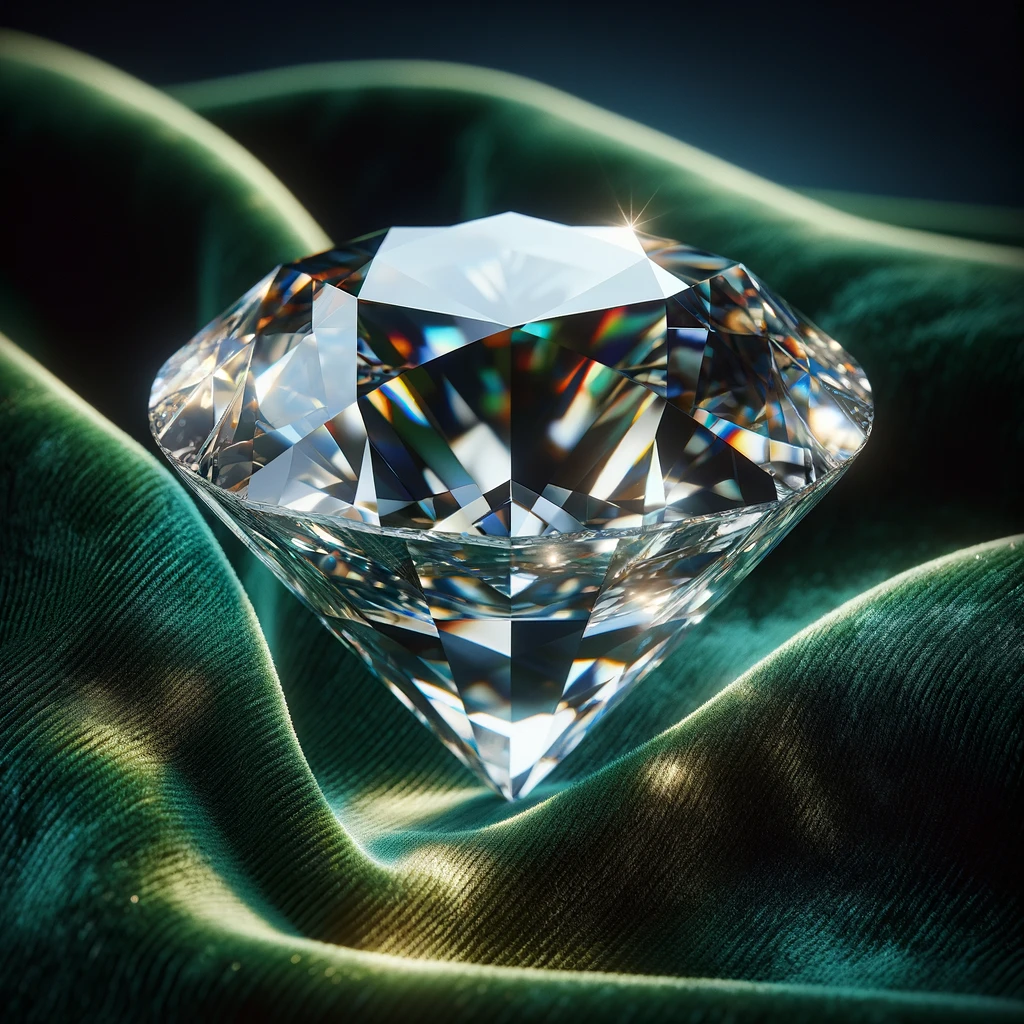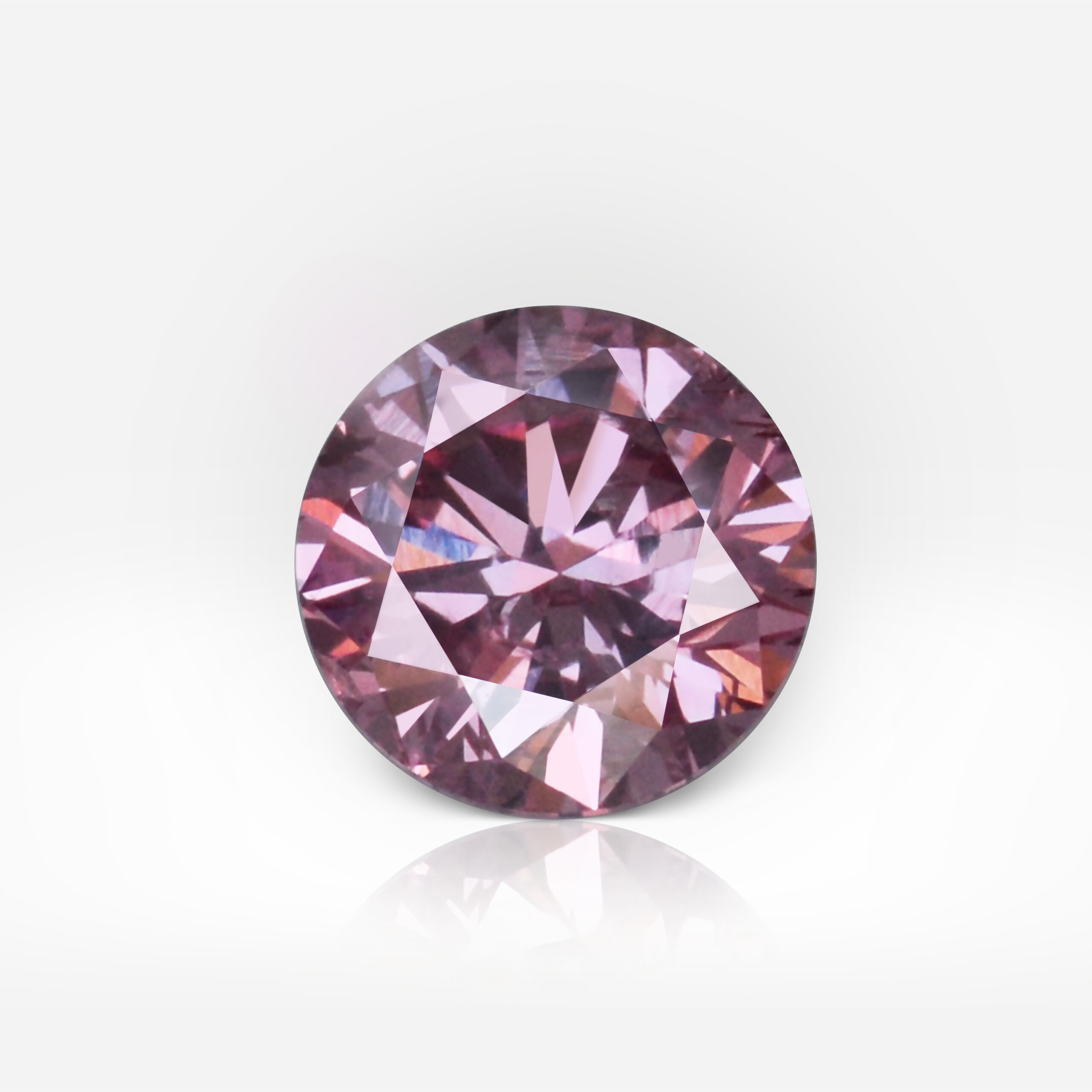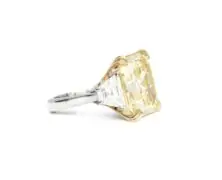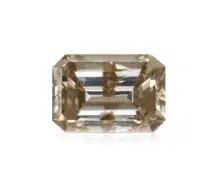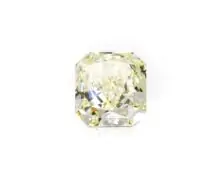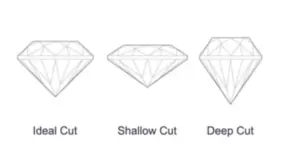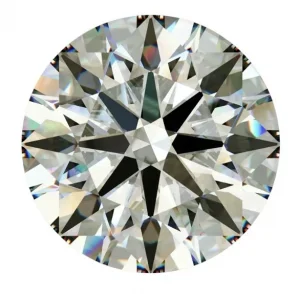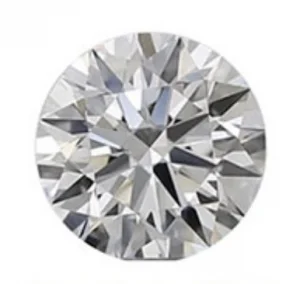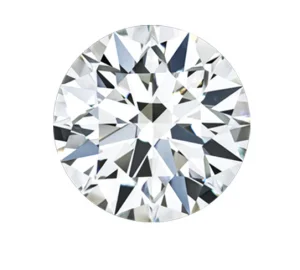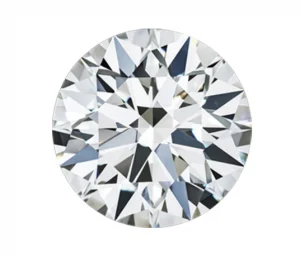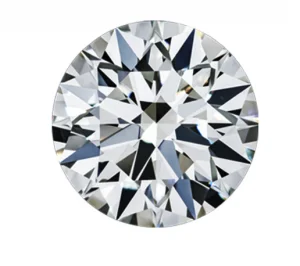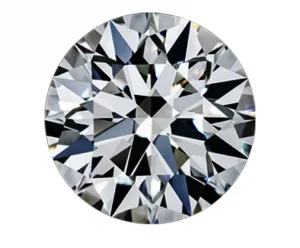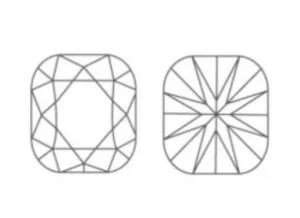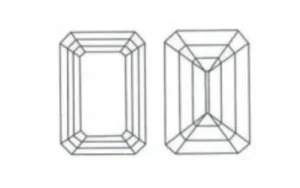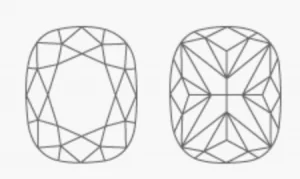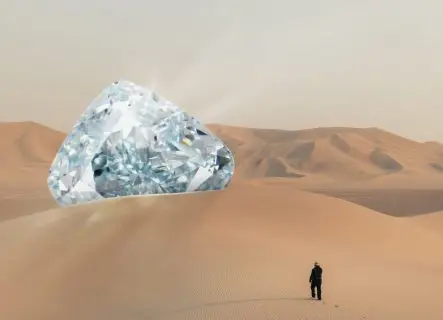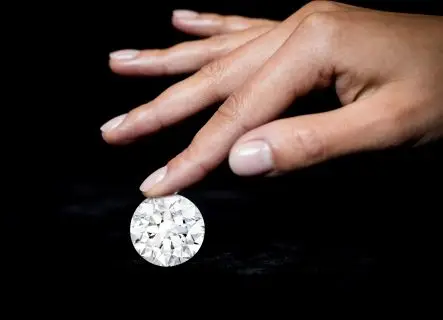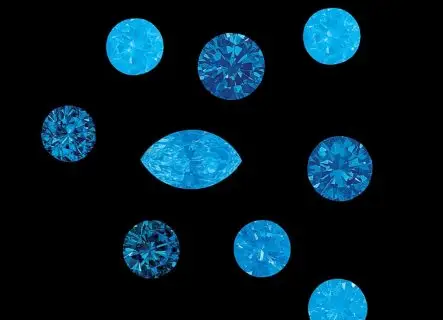Diamond cut chart
One cannot stress how vital it is to comprehend the many kinds of diamond cuts while selecting the ideal stone.
The Cut is one of the four well-known acknowledged criteria used to grade a diamond’s quality. You ought to take all of these things into account and be aware of the various diamond cut varieties while searching for a diamond.
Today, we will discuss diamond cuts in this article, including their qualities and why they are the most crucial information to have before purchasing a diamond. We will also assist you in choosing the ideal diamond cut for you by explaining the distinctions between diamond shapes and cuts
Understanding diamond cut
So, a diamond cut, what is that? In fact, this factor represents the way a craftsman cuts and polishes the diamond. The cut has a direct correlation with the brilliance of a diamond, its sparkle and fire. To put it bluntly, skills and knowledge of a cutter affects the charm of the diamond more than anything else. Especially the quality of the cut adds this mesmerizing and spellbinding effect to the stone.
The other three parameters that enable us to understand the quality of a diamond are color, clarity and carat weight. Together with the cut, they form the famous 4Cs formula.
All of them are crucial factors that in their own way influence the end result, that is, how much a diamond is graded for its characteristics. Previously, we have already talked about these factors, in our Educational Center you will discover the necessary information that will allow you to better understand the well-known 4Cs formula.
This factor is key to achieving the ideal result to get a sparkling and extraordinarily gorgeous diamond with the right proportions and brilliance. Diamond flat surfaces, or so-called a diamond table, is the topmost part of a diamond that is typically flat and polished. This facet plays a crucial role in reflecting light and enhancing the diamond’s brilliance and sparkle.
Among the other three factors 4Cs, which we listed earlier, this one is technically the most difficult to analyze. However, the most renowned laboratory and institute for Gemological research, GIA has developed a system by which they conduct the most efficient and unbiased analysis of all four factors, including cuttings. The GIA computes the proportions of those facets that influence the diamond’s face-up look in order to determine the cut grade of the standard round brilliant diamond, the form that predominates in most diamond jewelry.
Today’s advancements in technology further push the boundaries of possibility in diamond cutting, employing lasers and computer-aided design to perfect each facet. Despite these technological leaps, the essence remains rooted in history. The journey from the rudimentary point cut to the dazzling brilliant cut reflects not just technological progress but an enduring desire to capture and enhance the natural beauty bestowed by the Earth.
Selecting the perfect diamond involves careful deliberation of numerous factors, including cut, diamond cut quality. Don’t forget about the color and clarity of the stone. Whether you go for a round brilliant cut for its classic allure or opt for a cushion cut for a touch of vintage elegance, knowing the different types of diamond cuts will guide you toward the best choice.
We should note that in recent years, the rise of created diamonds has given consumers more options than ever. These diamonds, also known as lab-grown diamonds, are chemically identical to natural diamonds but are produced in a controlled environment. The created diamonds are not provided by Reuven Veksler. We work exclusively with rarest diamonds and only natural forms.
Diamond cut categories
Each diamond that is evaluated and assigned a cut quality grade, also referred to as the diamond cut grade. A diamond cut grade, which goes from exceptional to bad, is what you should take into consideration when purchasing a diamond. The more sophisticated the cut quality, the more allure and brilliance the diamond is likely to have. The diamond cut quality is another critical aspect to consider. In addition to cut quality, of course the color and clarity of a diamond possess a vital role in shaping its beauty and value.
Ideal + hearts
Round brilliant cut diamonds exclusively are cut with this highest cut grade. When observed from the table down and up, it is a superb ideal cut with perfect optical symmetry, revealing patterns shaped like hearts and arrows. Ideal + Hearts make up less than 1% of all diamonds. It is exceedingly complicated for the diamond cutter to reach the required degree of precision since the process takes way too longer than a usual one, it requires more expertise and skills. Finally, during this cutting you can lose more diamond carat weight. Hence, diamonds become smaller than they used to be. So, this cut requires exceptional craftsmanship and loses in carat weight.
Ideal
Round brilliant cuts have another greatest cut rate, which is called Ideal. Such diamonds are famous for having the most correct proportions and giving off maximum radiance and fire. This rare quality is found in less than 1% of all diamonds. This cut of diamond is a fantastic choice.
Excellent
Light is reflected high and evenly throughout the gemstone when it has an excellent cut. First of all, dimensions and great symmetry allow the light to do so. Secondly, outstanding proportions also help to embrace the attraction of the diamond. With the exception of round brilliant, a diamond with such a cut provides a perfect balance of size and brilliance to all other cuts. The diamond’s face will glow reflecting nearly all light. These diamonds will shine brightly because they are of a high quality grade.
Very Good
When a cut is very good, flaws are not obvious to the unaided eye. For buyers who are searching for a diamond that is at a more affordable price range or who are preferring other Cs, this can be a great high quality cut grade.
Good
Good implies that any flaws remain undetectable to the unaided eye. A diamond with a good-cut is still dazzling and brilliant and they offer beauty at a more affordable price which can be beneficial for your budget.
Fair
Fair cut provides less brilliance and charm. Still, they can be a very good option for small carat weight or for side stones, for example, on the engagement ring. In fact, we do not recommend considering a fair cut and we do not provide diamonds with such a cut on our website.
Poor
Any defects and imperfections can be easily noticed when diamonds are poorly cut. Such stones always look dull and colorless. At Reuven Veksler we do not provide as well as recommend such diamonds for the purchase.
What affects diamond cut?
The class and appeal of a diamond cut depends on several things. A specialist will name the following points that influence the cut and are key to achieving a perfect result. There are more than just few criteria and here are they.
Proportions
The brightness and light-reflecting capacity of a diamond depend on its proportions. A diamond’s overall beauty and long-lasting appeal are determined by its interaction with light. All diamonds have different combinations of table, width, and depth of a stone. the right proportions of a diamond create a wow effect and is one of the vital factors that influences the cut.
Polish
Polish describes the mechanical diamond cutting process. The smoothness of the diamond’s facets’ surface is indicated by the success of its polishing process. Polish is crucial because a poorly polished diamond will have several drawbacks at the same time. Firstly, less light passes through it. Finally, as a consequence, we will observe less brightness and scintillation.
Symmetry
The arrangement of a diamond’s facets—small angles in the diamond’s cut that function as tiny mirrors—is referred to as the symmetry. Symmetry has one of the most important roles in cutting a diamond because it will have an impact on how aesthetically pleasing the diamond appears, how much light it reflects and how close it is to the gold standard of perfect diamond symmetry.
Brilliance
Brilliance is a feature that indicates how much white light a stone are able to reflect and how bright this light is. For example, if you look at the face-up of your diamond, a good diamond will reflect a lot of bright white light. However, if the stone is asymmetrical or has some other defect, it will no longer be able to reflect much white light. Consequently, such a diamond will appear dull or “lifeless”.
Fire
The quantity of colored light reflected off the table and facets of your diamond is known as its fire. You already know that good diamonds should show a lot of brilliance. However, that is not all. They also have so-called fire. In other words, you should be able to see colored light reflecting off the diamond when you stare at it face-up in bright light, especially during the day. A diamond is deemed to have little fire if it does not reflect colored light.
Scintillation
The shine that appears on a diamond’s table and facets when light passes through them is referred to as scintillation. The light and dark patches on the diamond’s surface are what cause the light to scatter, giving the appearance of a sparkle. A more sought-after diamond is one with a lot of scintillation. A dull diamond can be caused by a lack of scintillation. This parameter as well as others mentioned above will determine the overall appearance of a stone.
Diamond cut rating
Diamond cuts can be different as well. There are three main types of the cuts. The most popular one is a round brilliant cut diamond.
Please, note that cut in this case refers to the technique and does not indicate the quality or craftsmanship of the cut itself.
Brilliant cut
Three-cornered and kite-shaped facets that radiate away from the diamond’s center make up the brilliant cut. When light is reflected by brilliant incisions, they resemble crushed ice or a prism in certain ways.
More often than not, a round brilliant cut diamond is the one that has this cut. Nevertheless, we can observe this cut in other diamond shapes. For instance, marquise, pear and oval shapes are seen in this cut. Yeah, maybe not that often but still. By the way, this cut can be used for cushion and trillion cut diamonds.
But, yeah, overall this brilliant cut diamond has a round shape most of the time.
Step cut
The step cuts are another technique of cutting. It has rectangular facets that go from larger to smaller as they rise outward. Because each facet is linear and lengthy, when light is reflected, it produces a unique “hall of mirrors” impression. If you ask about the most popular combinations for step cuts, most likely we will answer that these are Emerald, Asscher, and Baguette cuts. This cut emphasizes a diamond’s clarity and luster rather than its sparkle.
Popular varieties include the emerald and Asscher cuts. These diamonds have bigger, open tables that offer a window into the stone’s inner world, highlighting any imperfections, but also magnifying its purity. In fact, this effect can make a diamond appear larger and more brilliant than it actually is. Exactly because of this illusion the stone can appear larger and more appealing.
Mixed cut
The mixed cut, as its name suggests, is made up of both step-cut and brilliant facets. When the light is reflected, mixed cuts look like crushed ice.Regularly, they are displayed in contemporary diamond shapes including radiant, princess, and cushion cuts. In fact, cushion can be named the most admired shape cut in this way. This cut harnesses the scintillation of a round brilliant cut but maintains the squarish shape seen in step cuts. The crown of these diamonds is often faceted in a way similar to a brilliant cut, capturing light and reflecting it in myriad directions, whereas the pavilion typically exhibits the straight edges associated with step cuts. This hybrid nature gifts the stone with an unparalleled luminosity while preserving a geometric elegance—ideal for someone seeking the best of both worlds.
The difference between diamond cut and shape
Diamond shapes can be easily confused with its cuts. Many people may think that these are the same terms. However, the cut is about the way facets are arranged in order to produce a desirable face-up look of the stone.
To tell you the truth, there are different diamond shapes. Don’t be surprised that there are different diamond cuts and different types. For example, pear is the name of the shape the same as heart, marquise, round etc. These are all the diamond shapes or, to put it simply, its figures.
Let’s take one example of diamond shape to make it crystal clear. The most common and widely spread diamond shape for an engagement ring is a round shape. Diamonds that are cut to maximize light return and, consequently, shine are called round brilliant diamonds.
Diamond cut FAQs
What is diamond cutting?
To cut a long story short, your diamond cut is the way a diamond reflects light and glows. There are diverse diamond cuts. A diamond with poor cut quality will look dull and unimpressive, while a well-cut diamond will radiate beauty and sparkle.
All diamond cuts
According to the criteria, there are several types of cut categories. The perfect and flawless ones are Ideal + hearts and Ideal, but they are hard to find on the market and suit round brilliant diamonds only. The best is also the excellent cut. Very good and good are also frequently observed on the market, these cuts have small imperfections but usually invisible to the naked eye.Finally, there is a poor kind of cut in which the stone looks pale and dull
Ideal vs. Excellent Diamond Cut
Both an ideal and an excellent cut have the same qualities and are almost identical. The primary distinction between the two is that a perfect cut describes diamonds of other shapes, but an ideal cut exclusively refers to round brilliant diamonds.
What cut is best for diamonds?
To put it bluntly, a greatly cut diamond optimizes the amount of light that enters each pavilion. Light bounces back through the table and crown of the diamond rather than exiting through other areas.
The GIA uses the qualifier “excellent” to indicate the highest attainable grade. Because of their great facet angles and good proportions, these cuts let the charm of the diamond, its brilliance and fire shine through the table for everyone to witness.
These factors make superior cuts more desirable and radiant. In order to obtain the most sparkling diamond, we frequently suggest budget-conscious consumers to select not that massive, but well-cut diamond rather than a larger carat that is badly cut.
Explore our brilliant cuts
Explore numerous diamond cuts on our website and choose your best diamond within your budget. Reuven Veksler offers a huge number of unique cuts as well as colors of diamonds. Our specialists will help you pick the best diamond, which we hand-select specifically for you. And our diamonds will make you smile and your eyes sparkle with joy. You can choose them for engagement rings or other jewelry.
Contact us today or book an appointment to get best in class diamonds soon! Go shopping.


